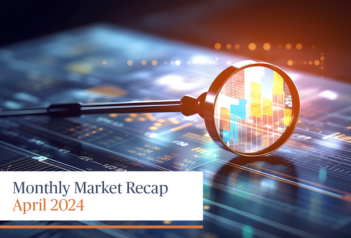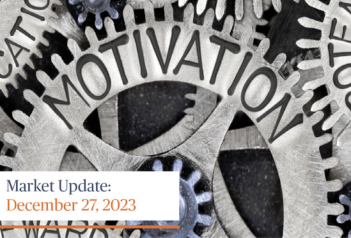We hope everyone had a wonderful Thanksgiving.
As we are getting ready for the holiday season, there have been many headlines about how much the cost of the Thanksgiving and Christmas meals have increased since 2020. According to the American Farm Bureau Federation, food prices are up 3.7% this year, while the 20-year average is about 2.4%. The organization said the driving factors include labor shortages, transportation cost increases, and supply chain issues. The challenges of finding and ordering gifts that will make it on time for Christmas Day are well documented by now.
I was able to spend a few days in Dallas with my family and took notice of the busy highways as well as the shops and restaurants. What really surprised me was the number of people at the malls. My astute wife pointed out that it made sense since one could go to a mall and buy available gifts right then and there. I also sensed some nostalgia for a return to normalcy by hanging out with friends and family at the malls. Back to the ‘80s anyone?
An after-Thanksgiving dinner conversation between my brother and I about supply chains and hybrid cars turned into a broader discussion about old economy versus new economy . While the stock market has rewarded the allure of the new economy such as innovation and disruption (i.e.: electric vehicles (EV), blockchain, metaverse) companies, the old economy of toilet paper, gasoline products, meat and milk is where we live daily.
For all the capital and investments made the last 20 years in new economy businesses, one could argue the old economy has been undercapitalized, hence the challenges we face. Higher commodity prices are the latest manifestation of this imbalance. This is not to say that one is better than the other. Individuals and society benefit from both.
Despite the good intentions of environmental, social and governance (ESG) investing, those investments are essentially short inflation and long momentum. Investors have poured millions into products and strategies that reward the stock price of companies that mostly benefit from the new economy. Mining for cryptocurrencies is energy intensive yet trading cryptos is all some investors want to talk about.
While there are a lot of merits to passive investing, systematic inflows exacerbate some of these trends and can lead to the misallocation of capital. Investments in energy or materials companies may not be sexy but are necessary. The same can be said for factories and infrastructure.
In conclusion, the last two years have shown us that we need the whole economy to work together to move forward. Deglobalization, onshoring of supply chains, and retooling the labor force will take time. Imbalances are bound to happen and continue. Private companies and governments must work together.
If you have any questions or want to have a conversation about the market or your portfolio, please contact Liz, Ed, Fred, Scott, Tyler, or myself. Your Sendero team is ready to help.
Best Regards,
Amaury de Barros Conti
210-930-9409
aconti@sendero.com


